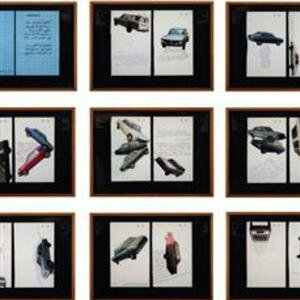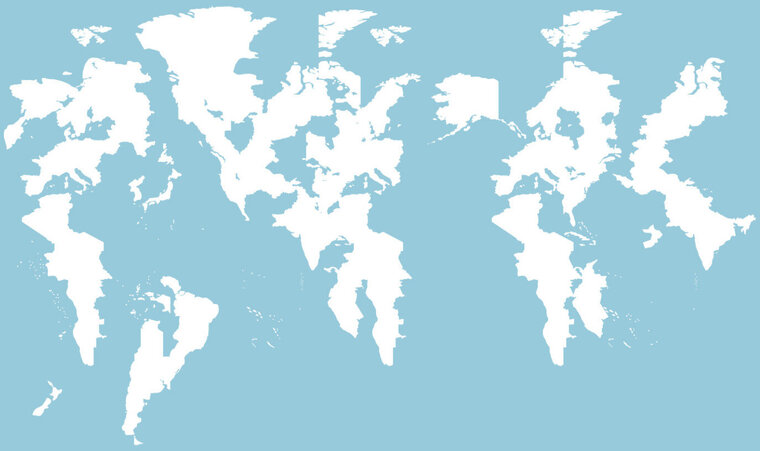


Last updated on Sat 21 October, 2017


CONNECTING ÖYVIND FAHLSTRÖM
21.10 2017 – 21.1 2018
STOCKHOLM
In a text from 1964, Öyvind Fahlström urges to manipulate the world. What does this mean for artists today, in our era of alternative facts, relative truths and fragmented narratives?
In an exhibition filling two floors in the Museum, 28 Swedish and international artists explore and challenge Öyvind Fahlström’s ideas on manipulation and theatricality. Four historic works by Fahlström define the playing field for the exhibition, which takes place in three zones: the main exhibition hall on Floor 4, the spaces connecting both floors, and the exhibition halls on the lower ground floor.
Is the world a playing field?
Fahlström (born in 1928 in São Paulo, d. 1976 in Stockholm) was one of the most innovative and versatile artists of the 20th century. When he developed a series of paintings with variable parts in the 1960s, his intention was not merely to make the content of the painting moveable, but also to express an approach to society and politics. Fahlström was part of a zeitgeist that sought to do away with static and authoritarian narratives. He wanted to demonstrate that the world can be “manipulated” by anyone and shaped by participation and play. This exhibition asks what manipulative potential art has today.
The theatrical in motion
World Trade Monopoly (B, Large) and Dr Schweitzer’s Last Mission (Öyvind Fahlström, 1970 and 1964-66 respectively) are shown on Floor 4. The latter is a large installation comprising fragments of information and images combined into a scenographic tableau. The work is in the form of pieces of a game distributed on a surface where fact, fiction and irrationality are mixed in a scenario with an open end. This part of the exhibition puts the theatrical in motion in a similar way, and asks how speculative enactments can manipulate the world. Dr Schweitzer’s Last Mission was named after the German-French theologian Albert Schweitzer, whose missionary medical work in Africa places the installation in a post-colonial discourse. Several works on this floor relate to thoughts on power relationships and historiography.
Actions in public space between the levels
The video Mao-Hope March (Öyvind Fahlström, 1966) is shown in the stairs between the two floors. This work is based on a demonstration that Fahlström staged in New York. The protesters carried placards with portraits of the American comedian Bob Hope, except one who carried a portrait of Mao Zedong. Without further information or comments, Fahlström let the protesters march in the streets. In addition, he hired a radio reporter to interview people along the way, asking them to comment on what was going on, and answer the question of whether they were happy. This recording is the soundtrack for the video. Mao-Hope March acts as a catalyst for works that intervene and activate events in public spaces – streets and public squares as well as the space we share as visitors in the museum.
World Bank as the centre of a hidden zone
In the windowless on the lower ground floor, a staged depot of gold ingots (Öyvind Fahlström, World Bank, 1971) forms the centrepiece in a narrative about the distribution of money and power in the world. This narrative is pursued further in contemporary works that discuss the conditions of production, labour and extraction of natural resources. Through Fahlström’s installation, this part of the exhibition establishes itself as a hidden zone, with stories and statements about that which is underlying, concealed, forgotten or protected from public view.
ARTISTS IN THE EXHIBITION
Lawrence Abu Hamdan, Rossella Biscotti, Juan Castillo, Aslı Çavuşoğlu, Kajsa Dahlberg, Detanico Lain, Economic Space Agency, Róza El-Hassan, Harun Farocki, Öyvind Fahlström, Goldin+Senneby, Núria Güell , Candice Lin, Jill Magid, Ibrahim Mahama, Nicholas Mangan, Sirous Namazi, Rivane Neuenschwander, Otobong Nkanga, Sondra Perry, Pratchaya Phinthong, Katarina Pirak Sikku, Natascha Sadr Haghighian , Jonas Staal, Hito Steyerl, Hanan Hilwé i samarbete med Walid Raad, Thu Van Tran, Alexander Vaindorf, Wermke/Leinkauf.
Curator: Fredrik Liew with Goldin+Senneby
The title, Manipulate the World is taken from a text Fahlström wrote about his variable paintings in Art and Literature No. 3, 1964.
This exhibition marks the culmination of Moderna Museet’s project on the artist Öyvind Fahlström, consisting of exhibitions, publications, research and events in 2014-2018.
Reseatch project: Research Öyvind Fahlström
Exhibitions and programme: Focus on Öyvind Fahlström
Join us in our endless discovery of modern and contemporary Arab art